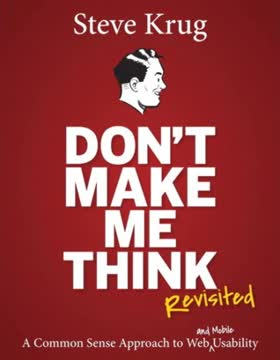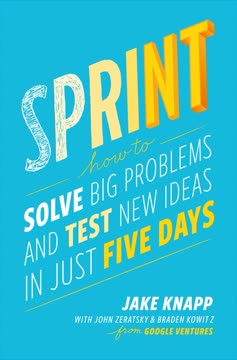重点摘要
1. 排版是一种工具,而不仅仅是字体的集合。
这本书不是关于字体本身,而是关于如何使用字体。
超越字体菜单。 排版不仅仅是选择一个视觉上好看的字体,更是理解如何利用字体来塑造内容、传达意义、创造视觉体验的艺术。它是将语言以可见且引人入胜的形式排列的技艺。
- 字体如同建筑师的材料,是设计师的资源。
- 设计师根据受众和情境选择并组合字体。
- 了解字形的演变对于有效使用字体至关重要。
有目的的应用。 有效的排版需要深入理解字形的演变及其相互作用,做出有意识的选择,以提升可读性、创造视觉趣味,并支持整体信息传达。
- 排版塑造内容,赋予语言以实体形态,促进信息的社会流通。
- 它是用来“做事”的工具,而非仅仅是漂亮的字母集合。
- 它将设计师与传统相连,贯通过去与未来。
与字体共思。 这里强调“与”,突出排版作为协作工具的特性。排版是用字体塑造内容,赋予语言实体形态,促进信息的社会流动。
- 排版是一种持续的传统,连接着你与过去和未来的设计师。
- 字体无处不在——街头、商场、网络、你的住所。
- 本书旨在与所有读者、作者、设计师、制作人、教师和学生对话,共同探讨可见文字的有序而不可预测的生命。
2. 字体有其历史与文化语境。
排版史反映了手工与机器、有机与几何、人体与抽象系统之间的持续张力。
形态的演变。 字体不是静止不变的存在,它们经历了数百年的演变,反映了文化变迁、技术进步和艺术运动。理解这段历史对于做出明智的设计选择至关重要。
- 早期字体模仿书法,体现手工的痕迹。
- 工业化兴起催生了粗犷装饰性的展示字体。
- 前卫运动将字母视为理论系统进行探索。
人文主义到抽象。 字体的演变可视为从紧密关联人体与书法的人文主义形态,走向更抽象几何的形态。这种有机与几何的张力至今影响着排版。
- 文艺复兴字体以古典手写体为模型。
- 启蒙时代字体基于网格,体现科学理想。
- 现代字体常结合几何形态与书法影响。
内涵与语境。 字体承载文化内涵与联想,影响信息的感知。选择字体不仅是审美,更是选择与内容及目标受众相契合的“声音”。
- Garamond 和 Baskerville 等字体传递传统与优雅感。
- Futura 和 Helvetica 等几何无衬线字体表达现代与中性。
- 展示字体可营造戏剧性或趣味感。
3. 字距同字形本身一样重要。
设计既是标记的行为,更是空间的行为。
负空间的重要性。 排版不仅关乎字母的正形,也关乎字母间及周围的负空间。这些空间——字母间、词间、行间——与字形本身同等重要。
- 字距创造节奏、质感和视觉层次。
- 它影响可读性、辨识度和整体视觉效果。
- 是排版构图艺术中不可或缺的元素。
字距调整。 设计师通过字距调整(kerning)、字间距(tracking)和行距(leading)等技术操控空间。
- 字距调整解决字母对组合的尴尬空隙。
- 字间距调整文本整体密度。
- 行距控制文本块的垂直节奏。
从具体到流动。 在金属活字时代,字距是具体的物理操作,需插入金属条和块。数字时代,字距变得流动灵活,设计师可精准操控。
- 字距从具体物件演变为灵活属性系统。
- 它是创造视觉质感、节奏和层次的工具。
- 是排版构图艺术的关键要素。
4. 文字是流动动态的系统,而非静态块体。
文字是一个场域或纹理,其颗粒、色彩、密度和轮廓可无限调整。
超越矩形。 文字不是静止的单一块体,而是可被操控和塑造的动态系统。设计师可调整其颗粒、色彩、密度和轮廓,创造不同视觉效果。
- 文字可视为场域或纹理,而非单纯词语集合。
- 它可呈现坚实或流动、沉重或轻盈的感觉。
- 可被拆分重组,形成新颖布局。
引导阅读流动。 排版帮助读者导航内容流,通过拆分文本、提供捷径和替代路径,助力信息的有效传达。
- 缩进提示新思想的开始。
- 高亮链接指示跳转至其他位置。
- 排版通过视觉线索帮助读者避免机械阅读。
从封闭到开放。 技术塑造了排版空间设计,从金属活字的具体物理性,到数字媒体的灵活开放。文字从封闭稳定的实体,演变为流动开放的生态。
- 数字时代文字更开放灵活。
- 可重新格式化、再利用和重组。
- 不再是固定对象,而是动态系统。
5. 网格是灵活的框架,而非僵硬的约束。
网格经历了数百年的排版发展演变。
基础结构。 网格不仅是页面上的线条,更是组织内容的基础结构。它们可以简单或复杂,具体或通用,严格定义或宽松解释。
- 网格体现控制,同时也体现灵活性。
- 它为内容在空间中的排列提供系统。
- 是创造秩序和视觉层次的工具。
从框架到场域。 网格从包围文本块的框架,演变为超越页面边界的场域。这反映了页面作为固定实体的传统模型的转变。
- 早期网格作为文本场域的框架。
- 现代网格更灵活动态。
- 可营造开放与扩展感。
模块化系统。 模块化网格将空间划分为等分单元,允许设计师创建灵活布局,适应不同内容类型。它们不是僵硬公式,而是生成变化与惊喜的框架。
- 模块化网格基于标准度量。
- 允许创造多样但基因相关的解决方案。
- 是创造秩序与视觉趣味的工具。
6. 层级引导读者穿越内容。
比例是设计元素相对于其他元素及作品物理环境的大小。
视觉组织。 排版层级旨在构建视觉结构,引导读者穿越内容。通过强调某些元素、弱化其他元素,使读者易于浏览、导航和理解信息。
- 层级通过大小、粗细、样式和间距变化实现。
- 帮助读者知道文本的入口和出口。
- 表达内容的组织结构。
多重线索。 设计师运用多种线索创造层级,包括大小、粗细、颜色和间距。常用冗余手法强化层级,多个线索共同指示同一重要性等级。
- 粗体、斜体、小型大写字母用于强调。
- 大小和行距变化制造视觉对比。
- 缩进和换行等空间线索也助力层级。
语境与比例。 排版元素的比例相对于作品的物理语境而言。屏幕上看似小的字体,印刷时可能显得较大,反之亦然。设计师需考虑作品的物理环境,构建视觉层级。
- 比例相对于作品的物理语境。
- 比例变化创造视觉对比、运动和深度。
- 比例帮助表达重要性的层级。
7. 编辑是设计过程中的关键环节。
校对工艺确保印刷文本忠实于作者手稿。
超越设计。 设计师常被期望兼具编辑能力,但编辑是一项独立技能,需专业训练和中立视角。优秀编辑对确保文本正确性、准确性和一致性至关重要。
- 编辑不同于写作和设计。
- 需要中立视角和细致关注。
- 是保障出版质量的关键。
编辑的三阶段。 编辑过程通常包括三个阶段:发展性编辑、文字编辑和校对。每个阶段关注文本不同层面,从整体结构到细节。
- 发展性编辑关注内容和结构。
- 文字编辑聚焦语法、拼写和一致性。
- 校对检查最终设计页面的错误。
避免错误。 错误可能出现在设计过程的任何阶段,从初稿到最终印刷。设计师必须警觉识别并纠正错误,同时区分印刷错误、作者修改和编辑修改。
- 印刷错误由印刷方负责。
- 作者修改由作者负责。
- 编辑修改由编辑负责。
8. 数字排版需考虑新因素。
随着数字设计工具兴起,排版重新与身体产生联系。
屏幕专属设计。 数字排版需区别于印刷排版,设计师必须考虑屏幕显示的限制与机遇,包括分辨率、抗锯齿和字体嵌入。
- 屏幕字体为数字设备优化设计。
- 抗锯齿制造屏幕上平滑曲线的错觉。
- 字体嵌入允许网页使用自定义字体。
位图与矢量。 数字字体可分为位图和矢量。位图字体由像素构成,矢量字体基于数学轮廓。两者各有优缺点。
- 位图字体适用于低分辨率显示。
- 矢量字体可缩放,适用任意大小。
- 许多设计师喜欢利用像素化字符的几何特征。
无障碍与普适性。 数字排版必须对所有用户友好,包括视障人士。设计师需构建结构层级,使用语义标记,确保设计能被屏幕阅读器及辅助技术轻松识别。
- 无障碍是数字设计的重要考量。
- 结构层级帮助搜索引擎理解网站,也方便多样用户访问。
- 网络诞生的初衷即为提供信息的普遍访问。
最后更新日期:
FAQ
What's "Thinking with Type" about?
- Comprehensive guide: "Thinking with Type" by Ellen Lupton is a comprehensive guide to typography, focusing on the use of type in design, writing, and editing.
- Structure and content: The book is divided into three main sections: Letter, Text, and Grid, each exploring different aspects of typography.
- Historical and practical insights: It provides both historical context and practical advice, making it suitable for designers, writers, editors, and students.
- Visual examples: The book is rich with visual examples and exercises to help readers understand and apply typographic principles.
Why should I read "Thinking with Type"?
- Foundational knowledge: It offers foundational knowledge for anyone interested in typography, whether you're a beginner or a seasoned professional.
- Practical applications: The book provides practical applications and exercises that can be directly applied to real-world design projects.
- Cultural and theoretical context: It explores the cultural and theoretical issues that influence typographic design, enhancing your understanding of the field.
- Inspiration and creativity: The book is designed to inspire creativity and encourage readers to experiment with type in innovative ways.
What are the key takeaways of "Thinking with Type"?
- Typography as a tool: Typography is a tool for shaping content and giving language a physical form, crucial for effective communication.
- Importance of spacing: Spacing is as important as the letters themselves, affecting readability and the overall aesthetic of a design.
- Hierarchy and alignment: Establishing a clear hierarchy and choosing the right alignment are essential for guiding the reader's eye and enhancing comprehension.
- Flexibility of grids: Grids are not rigid structures but flexible frameworks that can be adapted to suit different design needs.
How does Ellen Lupton define typography in "Thinking with Type"?
- Typography as a tradition: Lupton describes typography as an ongoing tradition that connects designers across time, emphasizing its historical roots.
- Tool for communication: Typography is a tool for doing things with language, shaping content, and enabling the flow of messages.
- Cultural and functional basis: The book asserts that typography has both a cultural and functional basis, influencing design habits and conventions.
- Elastic system: Typography is presented as an elastic system where rules can be broken to achieve creative and effective design solutions.
What are the main sections of "Thinking with Type" and what do they cover?
- Letter: This section explores the anatomy of letterforms, type classification, and the evolution of typefaces from historical to modern times.
- Text: It focuses on the arrangement of letters into coherent bodies, covering topics like spacing, alignment, and the creation of typographic hierarchy.
- Grid: The grid section examines spatial organization, discussing how grids can be used to structure content and create dynamic layouts.
- Exercises and examples: Each section includes exercises and visual examples to help readers apply the concepts discussed.
What is the significance of spacing in typography according to "Thinking with Type"?
- Crucial for readability: Proper spacing is crucial for readability, affecting how easily text can be read and understood.
- Negative space: The book emphasizes the importance of negative space, which can be as significant as the letters themselves in a design.
- Types of spacing: It covers different types of spacing, including word spacing, line spacing, and tracking, and how they impact the overall design.
- Visual balance: Spacing helps achieve visual balance and harmony in a layout, guiding the reader's eye through the content.
How does "Thinking with Type" address the concept of typographic hierarchy?
- Organizing content: Typographic hierarchy is about organizing content to emphasize certain elements and guide the reader's attention.
- Use of cues: The book discusses using spatial and graphic cues, such as size, style, and placement, to create a clear hierarchy.
- Redundancy in signals: It suggests using redundancy in signals, like combining indents with line breaks, to reinforce the hierarchy.
- Practical examples: The book provides practical examples and exercises to help readers implement effective typographic hierarchies in their work.
What role do grids play in typography as explained in "Thinking with Type"?
- Framework for design: Grids provide a framework for organizing content, helping designers create structured and coherent layouts.
- Flexibility and adaptability: The book emphasizes that grids are flexible and can be adapted to suit different design needs and content types.
- Historical context: It explores the historical development of grids, from classical book layouts to modernist design methodologies.
- Practical application: Readers are encouraged to experiment with grids through exercises, learning how to use them effectively in their projects.
What are some of the best quotes from "Thinking with Type" and what do they mean?
- "Typography is a tool for doing things with language." This quote highlights the functional aspect of typography as a means of shaping and communicating content.
- "Typography is an ongoing tradition that connects you with other designers, past and future." It emphasizes the historical continuity and community within the field of typography.
- "The grid is not a rigid formula but a flexible and resilient structure." This quote underscores the adaptability of grids in design, encouraging creative use.
- "Spacing is as important as the letters themselves." It stresses the significance of negative space in achieving readability and aesthetic balance.
How does "Thinking with Type" approach the history of typography?
- Historical evolution: The book traces the evolution of typography from early typefaces modeled on calligraphy to modern digital fonts.
- Influence of technology: It discusses how technological advancements, like movable type and digital design tools, have shaped typographic practices.
- Cultural impact: The book explores the cultural and artistic movements that have influenced typography, such as the Renaissance and modernism.
- Legacy and innovation: It highlights the balance between preserving typographic traditions and embracing innovation in contemporary design.
What exercises does "Thinking with Type" include to help readers practice typography?
- Modular lettering: Readers are encouraged to create prototype bitmap typefaces using grids, exploring the systematic quality of typography.
- Space and meaning: Exercises focus on using spacing, sizing, and placement to express the meaning of words or ideas visually.
- Alignment and hierarchy: Practical tasks involve experimenting with different modes of alignment and creating typographic hierarchies.
- Grid systems: The book includes exercises on designing with grids, helping readers understand their flexibility and application in layouts.
What is the importance of typographic hierarchy in design as discussed in "Thinking with Type"?
- Guiding the reader: Hierarchy helps guide the reader's eye through the content, making it easier to navigate and understand.
- Emphasizing key elements: It allows designers to emphasize important elements, ensuring that the most critical information stands out.
- Creating visual interest: A well-structured hierarchy adds visual interest and depth to a design, enhancing its overall impact.
- Consistency and clarity: The book stresses the importance of maintaining consistency in the use of typographic cues to achieve clarity and coherence.
评论
《字体思维》被广泛认为是一本内容丰富的排版入门书籍,以其视觉吸引力和实用见解受到赞誉。许多读者表示,本书有助于理解设计原则,并提升对日常生活中排版的欣赏。书中将内容分为字母、文本和网格三个部分,结构清晰,备受好评。虽然部分资深设计师认为内容较为基础,但大多数初学者和爱好者都认可其通俗易懂的表达方式。少数评论指出书中存在错误或内容略显浅显,但总体而言,本书被推荐为排版与设计爱好者的重要参考资料。
Similar Books
















